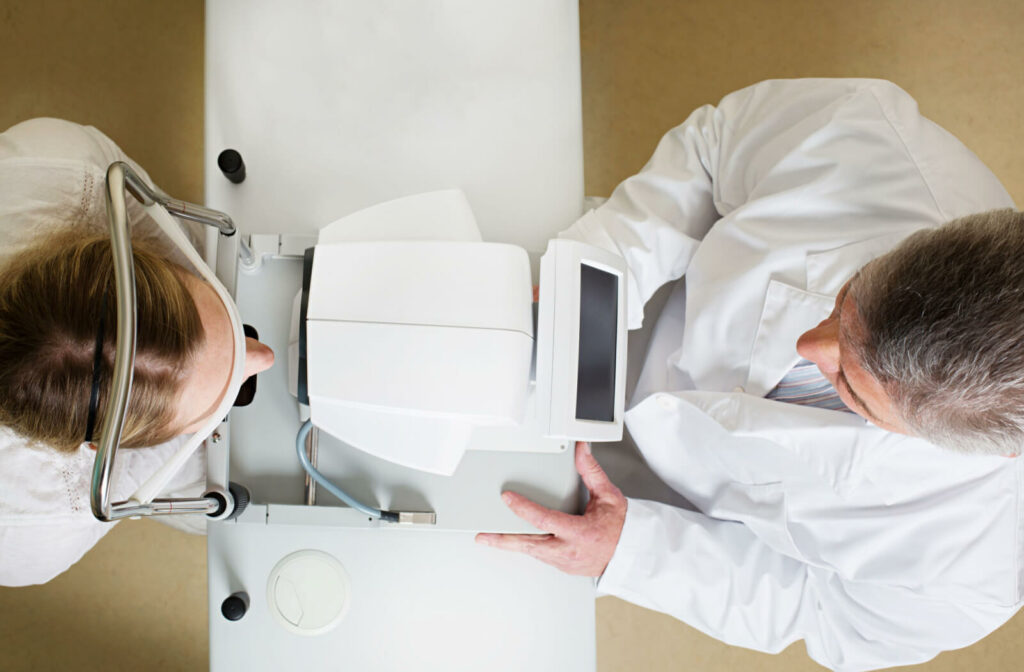Your eyes and vision are ever-changing, and different conditions may affect your eyes and vision over the years. The first step to maintaining healthy vision is scheduling consistent eye exams with your optometrist so they can stay up to date with your visual development. Keratoconus is one of these vision conditions that can be challenging to manage. Let’s look at what keratoconus is, the symptoms, if it can be cured, and how your optometrist can help you manage the condition.
What Is Keratoconus?
Keratoconus is an eye condition that occurs when your cornea thins and gradually bulges outward, forming a cone shape. While keratoconus usually affects both eyes, it can cause an imbalance and affect one eye more than the other.
Signs and symptoms of keratoconus can change as the disease progress, and they may include:
- Increased sensitivity to bright light and glare
- Frequent changes in eyeglass prescriptions
- Sudden worsening or clouding of vision
- Blurry or distorted vision
Keratoconus usually begins affecting people between the ages of 10 and 25 and may progress slowly over 10 years or longer.
Although the exact causes of keratoconus are unknown, there have been risk factors linked to increased chances of developing keratoconus, such as:
- Having conditions such as retinitis pigmentosa, Down syndrome, hay fever, and asthma
- A family history of keratoconus
- Rubbing your eyes frequently and vigorously
If you find your eyesight worsening rapidly and notice the symptoms associated with keratoconus, it’s a good idea to get in touch with your optometrist to schedule a comprehensive check-up and review your management options.
Keratoconus can be a challenging condition to navigate, and your optometrist can help you find a solution that works for you.
Managing Keratoconus
During your comprehensive eye exam, your optometrist will carefully examine your cornea with innovative diagnostic technology to diagnose keratoconus.
When your symptoms are mild, your vision can be corrected with eyeglasses. As keratoconus progresses, specialty hard contact lenses may be used to help keep your vision properly focused.
While keratoconus cannot be fully cured, it is possible to manage the condition using different treatment methods, and progression may slow in your 40s or 50s.
While glasses and contact lenses are usually the ideal options to help control keratoconus, let’s look at some different treatment methods for keratoconus.
Intacs
Intacs are a small curved device that is surgically put in your cornea to help flatten the curvature of your cornea associated with keratoconus and improve vision.
Collagen Cross-Linking
Collagen cross-linking involves using a special UV light and eye drops to strengthen the cornea. This procedure helps flatten or stiffen the cornea, preventing it from bulging further.
Corneal Transplant
A corneal transplant is an option when your keratoconus symptoms are severe. This procedure involves replacing all or part of your cornea with healthy donor cornea tissue.
Your optometrist can help recommend the best treatment option for your unique visual needs.
Preserving Your Eye Health
Keratoconus is a condition that can worsen quickly, and your optometrist can help diagnose and provide management methods that can help keep your vision healthy and clear.
Book an appointment with your optometrist to get a comprehensive eye exam and begin managing your keratoconus symptoms.



